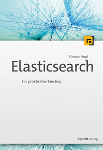Making Your Daily Standups More Effective
31 Jul 2023For a long time I couldn’t really put my finger on what bothered me with how standup meetings are often being run in Scrum like processes. Now that I realized how focusing on the work you should be doing can make them more effective I never want to go back to experiencing them differently.
The Usual Way
A very common way to run standups is to go around the room (virtually or in person) and let people answer three questions, often informally:
- What did I do yesterday?
- What am I planning to do today?
- Are there any blockers?
People would talk about how they spend their time, including the tasks they are working on, sometimes using the board to move tasks around. While this sounds great it has some serious issues and doesn’t lead to the team performing at their best.
The Change
Instead of asking those questions there’s a lot of benefit to put the board with your tasks on it at the center of the discussion. You start with the tasks on the right side (often in test or in review) and discuss what is needed to move them to done. You then follow all columns until you arrive on the left, making sure that you cover all the work the team is currently committing to do. This is sometimes also called Walking the board.
Benefits
This allows for a few noticeable benefits.
You don’t miss work items. If you only talk about what people did you are not really looking at the work that you should be doing, the work you committed to do for this iteration. This can easily lead to tasks left in review or in progress, without ever being touched or noticed, dragged from sprint to sprint.
You notice how much work is in progress. To reduce context switches it’s a good idea to minimize the work items the team or team members keep in progress. If you don’t look at the overall work and only at the work everyone is doing you can easily miss if there are too many open tasks.
You provide an opportunity to do actual team work. If you decide that reducing work in progress is something to strive for it’s a good idea to have everyone help finishing work items. This can mean that others are jumping in to help bring tasks to completion, e.g. by testing or pairing on issues. It becomes the responsibility of the team to tackle the tasks.
The meeting can be more engaging. Even if you are interested in what others are doing your mind can start wandering when others are taking a few minutes to talk about their schedule. Talking about the tasks will have a higher relevance and also a greater variation.
People don’t need to appear busy. For everyone who has been in a role that includes some organizational work or just a broader context of work (like being a tech lead) you will remember times when you had a hard time to actually summarize what you worked on. There’s so many small things, often happening in an unplanned manner and this can lead to you desperately going through your memory or to-do list to find items you did, just so that you have something to say, also including items that might not be relevant for the team.
And the Downsides?
Even though I hope that everything mentioned so far there can still be some concerns coming up when considering implementing this approach.
Putting the work in the center of the discussion can feel like making the sync more mechanic, less about the people. While this can be true I think this is easily compensated by the reduced stress of people having to be perceived as busy all of the time. Also, you will likely save some of your standup time with this approach - why not use it on something that is actually social? For example, in my current team we spend some time talking about what we did over the weekend every Monday morning, making for an enjoyable start in the week.
You might be missing important content. You could say that the fact that the tech lead did two interviews and talked to another team could be relevant for the team. This can again be true, not all work that is relevant for the team will be tracked on the board. But it's pretty easy to fix this using a single question at the end - “Anything else that is relevant for the team?”. This is the time when people can update everyone on things that are happening that they need to pay attention to. But it’s never the time for people to appear busy.
Shoutout to my former colleague Alasdair George for helping me see this problem clearly and put a name on it.
